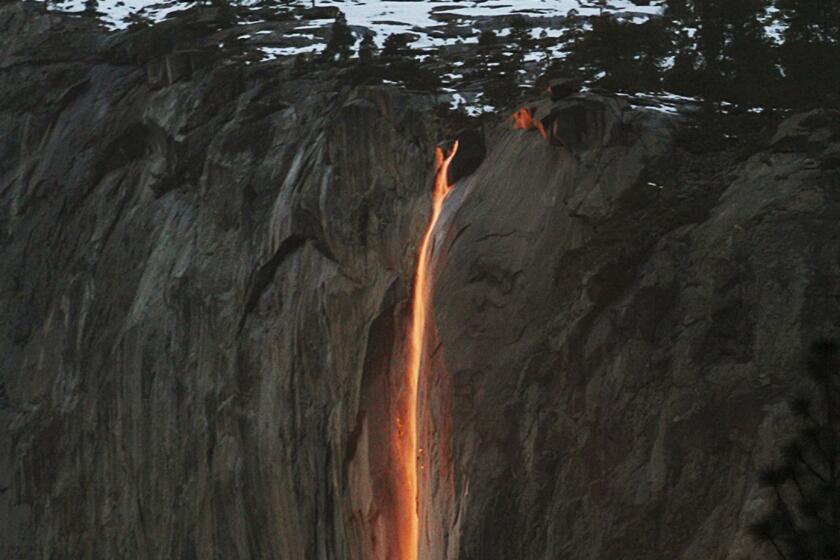Forget your phone. This is how best to photograph Yosemite’s ‘firefall’
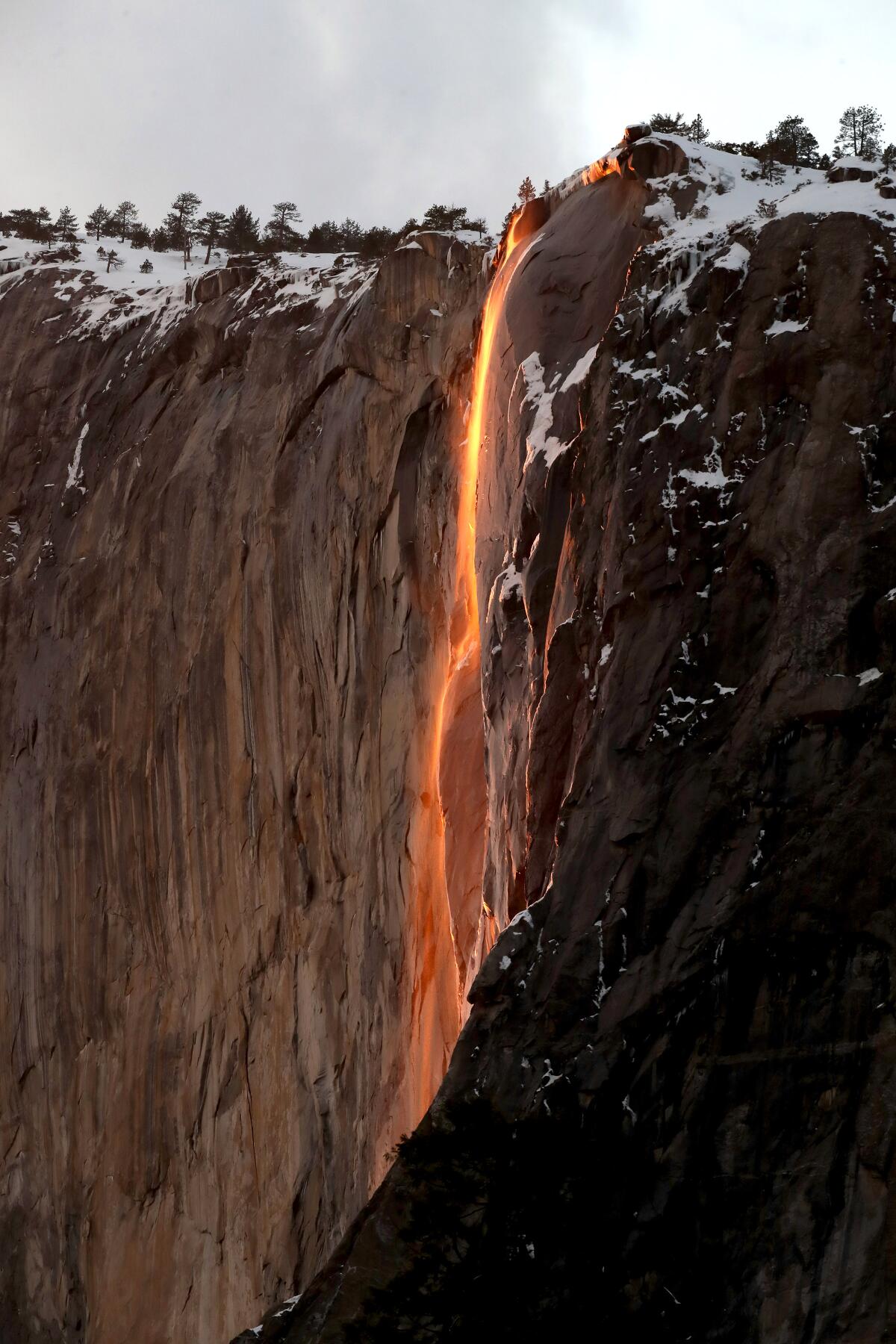
- Share via
Conditions have to be perfect to see the natural “firefall” in Yosemite National Park, a reflected-sunset effect that happens in mid- to late February. Late-afternoon clouds and haze can spoil your chances of seeing the glowing orange streak on the east side of El Capitan.
But if you’re in the right spot (despite traffic and crowds) and at the right time, how are you going to snap a great photo? Hint: Your phone might not cut it.
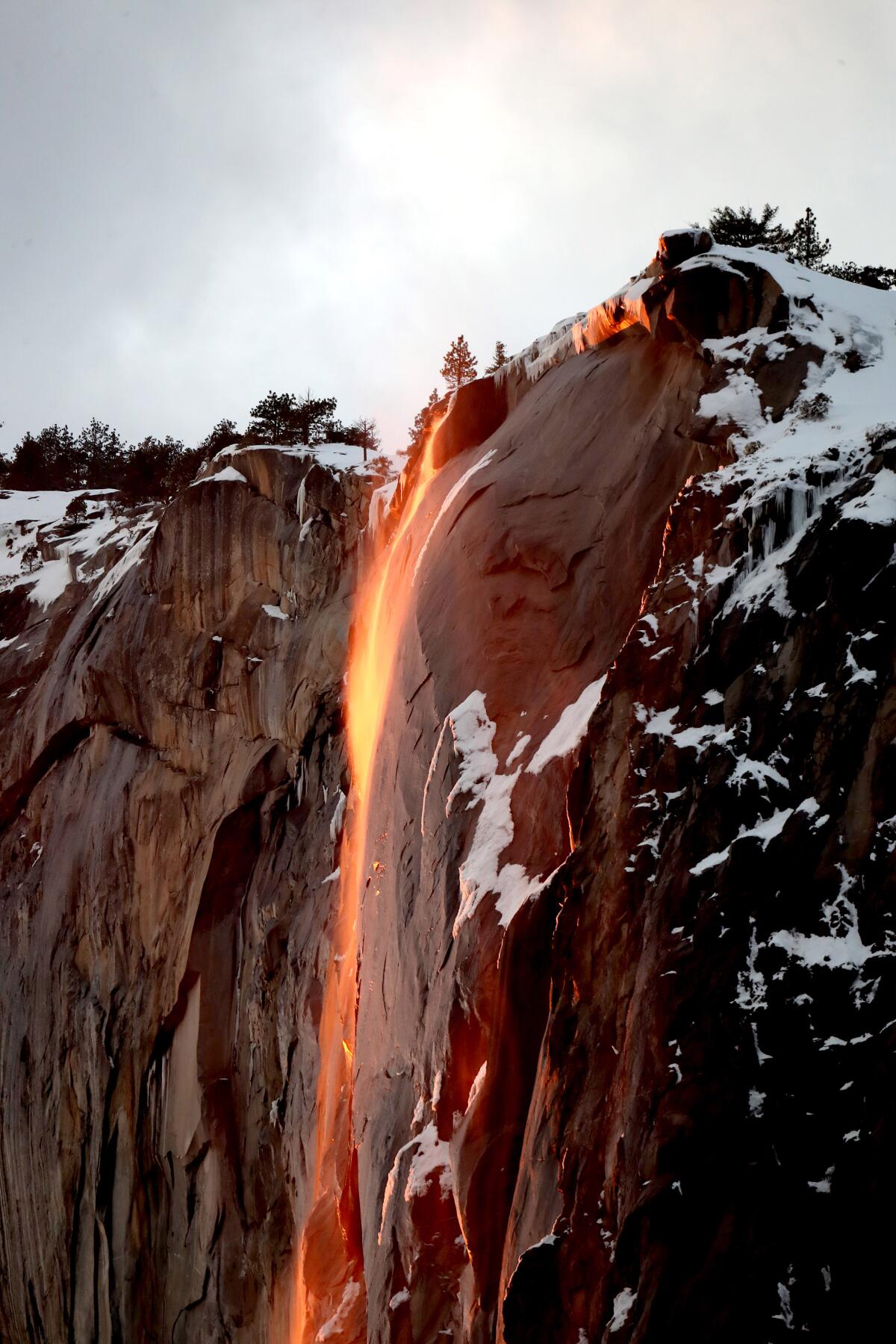
“iPhones are good for many things, but for this one, I think its best to either take a regular camera, something with a zoom lens, or just go and enjoy the sight,” photographer Raul Roa writes in an email. “Fiddling with an iPhone exposure and zoom while the falls ‘catch fire’ is not what you want to be doing during a bucket-list, rare event like this one.”
Roa, a photographer with the Times Community News, part of the Los Angeles Times, captured stunning images during last year’s firefall and plans to return for another try in February.
Sunsets at Yosemite’s Horsetail Fall explode with fiery colors in February, if conditions are clear.
“Trying to guess what lenses would be best to capture the scene was hard,” he writes. “Without knowing how far away the actual falls would be, I decided to take the Sigma 60-600mm lens. It’s a heavy lens, but it would give me the range of what two or three separate lenses could manage.
“I took two camera bodies, one with a wide-angle lens, and one with the Sigma. I also took a GoPro along to do super-wide angle shots and time-lapse. ... [I]n my wide angle shots, the falls are really far away and look really small.” (See Roa’s time-lapse video below.)

What you need to know before you go
1. Don’t miss it. Seeing the glow of light hitting Horsetail Fall on the east side of El Capitan is an endeavor that requires precise timing. Optimal dates fall between Feb. 12 and 28, with the best day being Feb. 22. The window period of light will be between 5:28 and 5:40 p.m. on the 22nd. Check dates and times at Aaron Meyers Photography.
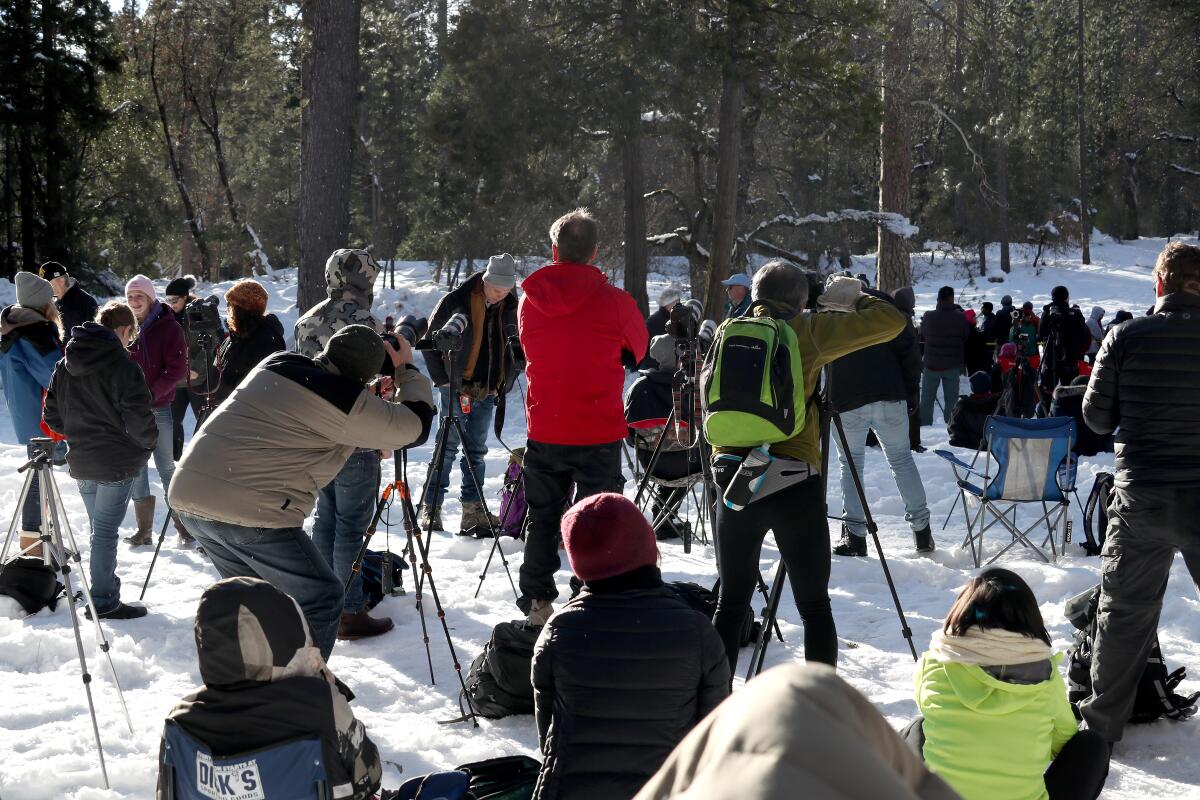
2. Expect crowds and traffic. Hundreds come to see the spectacle every year. Photographers start setting up as early as noon to get a good spot and avoid traffic delays. Yosemite’s traffic restrictions around viewing spots are in effect noon to 7 p.m. between Feb. 14 and 27. The park urges visitors to park at Yosemite Falls parking lot and walk the 1.5 miles each way to places near the El Capitan Picnic Area. Additionally, the park will close one lane along Northside Drive for pedestrian access.
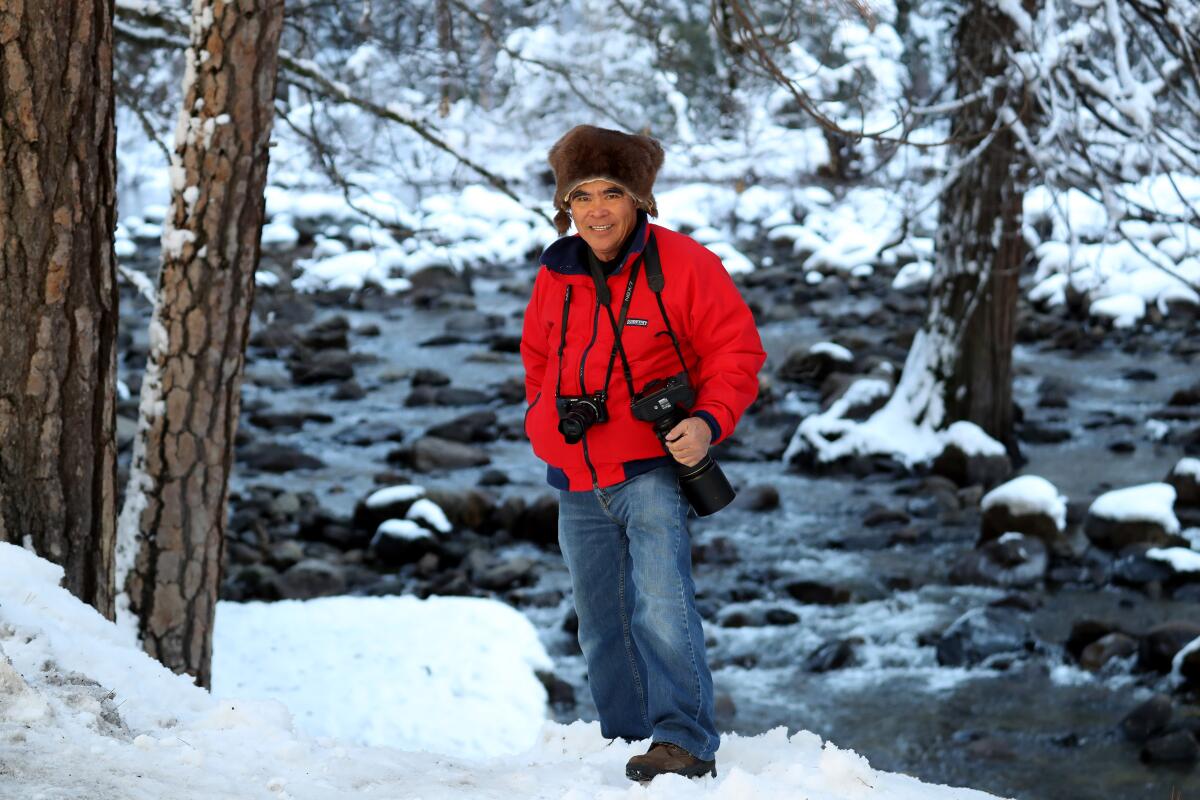
3. Be prepared. Bring snow chains, warm layers of clothing, a flashlight or head lamp, and a camera with a zoom lens. “Once we arrived, we had to wait about three hours among dozens, if not hundreds, of people, sitting on the snow in temperatures in the high 30s,” Roa writes. “Luckily we had layers and that helped to stay warm. Our feet, though did get cold, even with thick socks and heavy boots.”
Roa also suggests bringing a portable chair and small tarp to set your backpack and equipment on “because snow will get everything wet.” Since you’ll be waiting around, bring snacks, water and games. “And, don’t forget your iPhone … with your favorite music to keep you entertained,” he writes.
4. Stay for a second day. There’s no guarantee you’ll see the firefall on your selected date. Build in an extra day in Yosemite in case you strike out the first day.
And sometimes, well, you just might not get the shot.
“You’re looking at a guy who has been soundly beaten by the light,” veteran L.A. Times photographer Mark Boster writes in an email. “I’ve tried shooting Horsetail Fall twice and failed twice! Each time, I was either too early or too late or the sun set behind the clouds. Some wonderful mid-February evening in the future, I may just get it right and beat the light at Horsetail.”
More to Read
Sign up for The Wild
We’ll help you find the best places to hike, bike and run, as well as the perfect silent spots for meditation and yoga.
You may occasionally receive promotional content from the Los Angeles Times.
